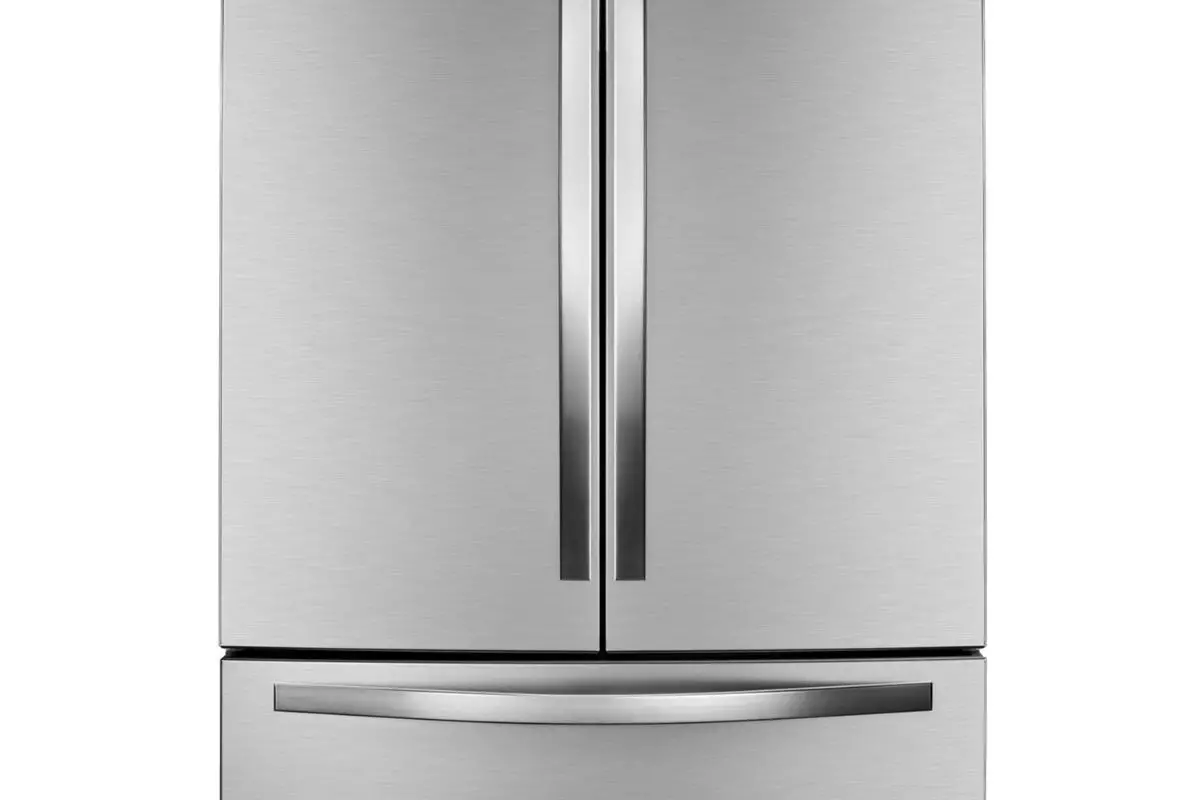In the realm of beverage preservation, a query often arises regarding the suitability of refrigerating hot coffee. This inquiry delves into the intricate balance between the desire to retain the aromatic essence and the potential hazards that may arise from improper storage.

The act of placing scalding coffee in the fridge is a subject of scrutiny due to the potential ramifications it may have on both the coffee’s flavor profile and safety for consumption. This article aims to explore the consequences of temperature shock and flavor alteration, the possibility of bacterial growth, as well as the challenges posed by condensation and dilution when refrigerating hot coffee.
Moreover, it will delve into proper cooling techniques, alternative ways to store leftover coffee, and conclude with recommendations to ensure optimal safety and quality.
By examining these factors, readers will gain valuable insights into the implications of refrigerating hot coffee and equip themselves to make informed decisions about its preservation.
Key Takeaways
- Refrigerating hot coffee can alter flavor and cause temperature shock.
- Placing hot coffee directly in the fridge can lead to bacterial growth.
- It is recommended to cool hot coffee to room temperature before refrigerating.
- Refrigeration inhibits bacterial growth and preserves coffee taste and quality.
Temperature Shock and Flavor Alteration
Temperature shock and flavor alteration are potential consequences of placing hot coffee in the refrigerator. When hot coffee is rapidly exposed to cold temperatures, it undergoes a temperature shock, which can result in a change in its flavor profile.
The sudden drop in temperature causes the coffee to undergo a process called thermal shock, where the rapid cooling causes the coffee to contract and release volatile compounds. These compounds, responsible for the aroma and taste of coffee, can be lost or altered during this process, leading to a less enjoyable drinking experience.
In addition to flavor alteration, placing hot coffee in the refrigerator can also pose a potential safety risk. The warm environment of freshly brewed coffee provides an ideal breeding ground for bacteria. When the hot coffee is placed in the refrigerator, it takes a significant amount of time to cool down to a safe temperature, allowing bacteria to multiply and potentially cause foodborne illnesses.
Therefore, it is recommended to allow hot coffee to cool down to room temperature before transferring it to the refrigerator. This gradual cooling process minimizes the risk of temperature shock and flavor alteration, while also ensuring that the coffee reaches a safe temperature more quickly, inhibiting bacterial growth.
Potential Bacterial Growth
Refrigeration of coffee has the potential to inhibit bacterial growth due to the controlled environment provided by low temperatures. When coffee is brewed, it is generally served hot, and if left at room temperature for an extended period, bacteria can begin to multiply.
However, placing hot coffee directly in the refrigerator can result in temperature shock, which may cause flavor alteration. It is important to allow the coffee to cool down to room temperature before refrigerating it to avoid this issue.
Bacterial growth in coffee can lead to the development of harmful pathogens, such as E. coli or Salmonella, which can cause foodborne illnesses. By refrigerating hot coffee, the low temperatures can inhibit the growth of these bacteria, ensuring that the coffee remains safe to consume.
Additionally, refrigeration helps to slow down chemical reactions that can occur in coffee, such as oxidation, which can lead to the formation of off-flavors. This can help preserve the taste and quality of the coffee for a longer period.
However, it is important to note that condensation and dilution can occur when hot coffee is placed directly in the refrigerator. This can result in a weaker and diluted flavor profile. To avoid this, it is recommended to allow the coffee to cool down before refrigerating it.
Condensation and Dilution
Condensation and dilution can lead to a loss of flavor and strength in the coffee when it is cooled down and stored. When hot coffee is placed in the fridge, it undergoes a process called condensation. This occurs when the warm air inside the fridge comes into contact with the cold coffee, causing water vapor to form on the surface of the coffee. As a result, the coffee becomes diluted, leading to a weaker taste.
Furthermore, the condensation process can also affect the aroma of the coffee. The volatile compounds responsible for the pleasant aroma of coffee can be lost due to the formation of water droplets on the surface. This can result in a less aromatic and less enjoyable coffee drinking experience.
Additionally, the dilution of coffee can also impact its strength. If the coffee is diluted too much, it may become too weak and lack the desired intensity. This can be particularly disappointing for those who prefer a strong cup of coffee.
To ensure optimal flavor and strength when cooling down coffee, it is important to employ proper cooling techniques. These techniques will be discussed in the subsequent section, providing insight into the best practices for preserving the quality of coffee when refrigerating it.
Proper Cooling Techniques
Optimal flavor and strength of coffee can be preserved when employing appropriate techniques for cooling it down. When hot coffee is placed in the refrigerator, it is important to cool it down gradually to prevent condensation and dilution. Rapid cooling can lead to the formation of condensation on the coffee’s surface, which can result in a loss of flavor and aroma. Additionally, if the hot coffee is poured into a container with a lid, the evaporating steam can lead to an increase in humidity inside the container, causing further dilution of the coffee.
To ensure proper cooling, it is recommended to transfer the hot coffee into a shallow, wide container. This allows for faster heat dissipation and reduces the risk of condensation forming on the surface. Placing the container on a wire rack or a trivet inside the refrigerator can also promote better air circulation, aiding in the cooling process.
To help you better understand the techniques for cooling coffee, here is a table summarizing the dos and don’ts:
| Do | Don’t |
|---|---|
| Transfer hot coffee into a shallow, wide container | Pour hot coffee into a sealed container |
| Place the container on a wire rack or trivet | Place the container directly on a refrigerator shelf |
| Allow the coffee to cool gradually in the refrigerator | Rapidly cool the coffee in the freezer |
| Cover the container with a loose-fitting lid or wrap | Seal the container tightly |
By following these proper cooling techniques, you can preserve the flavor and strength of your coffee. In the next section, we will explore alternative ways to store leftover coffee.
Alternative Ways to Store Leftover Coffee
An alternative method for preserving the quality of brewed coffee involves employing alternative storage techniques.
One option is to transfer the leftover coffee into a clean, heat-resistant container and let it cool to room temperature before refrigerating. This approach minimizes the exposure to temperature fluctuations, which can negatively impact the taste and aroma of the coffee.
Another method is to freeze the leftover coffee in ice cube trays and then transfer the coffee cubes into a freezer bag. This technique allows for convenient portioning and reduces the risk of spoilage. However, it is important to note that the flavor and aroma of the frozen coffee may be slightly altered upon thawing. To mitigate this, consider using the thawed coffee cubes in iced coffee beverages where the flavor alteration is less noticeable.
Additionally, it is crucial to label the container or bag with the date and time of storage to ensure that the coffee is consumed within a reasonable timeframe.
By employing these alternative storage techniques, coffee enthusiasts can extend the lifespan of their leftover brew and maintain its quality until consumption.
Now, turning to final thoughts and recommendations…
Final Thoughts and Recommendations

In exploring alternative ways to store leftover coffee, it is essential to consider the final thoughts and recommendations regarding the matter. While it is tempting to put hot coffee directly into the fridge for immediate cooling, it is generally not recommended due to safety concerns.
When hot coffee is placed directly in the fridge, it can raise the temperature inside the refrigerator, potentially compromising the overall food safety and quality. The sudden influx of hot liquid can cause the surrounding food items to warm up, leading to bacterial growth and food spoilage. Moreover, the condensation that forms when hot coffee is sealed inside a container can create a breeding ground for bacteria.
To ensure optimal safety and quality, it is advisable to allow hot coffee to cool down to room temperature before transferring it to the refrigerator. This can be achieved by leaving the coffee uncovered for approximately 30 minutes. Once cooled, the coffee should be stored in an airtight container to prevent any potential contamination.
Additionally, it is crucial to consume leftover coffee within 24 hours to minimize the risk of bacterial growth. If the coffee appears or smells off, it is best to discard it to avoid any potential foodborne illnesses.
By following these recommendations, individuals can safely store their leftover coffee without compromising their health or the quality of the beverage.
Frequently Asked Questions
How long can I safely leave hot coffee out before it needs to be refrigerated?
Hot coffee should be refrigerated within 2 hours of brewing to prevent bacterial growth. Leaving it at room temperature for longer can increase the risk of foodborne illnesses. Cooling the coffee before refrigeration helps maintain its quality.
Can I add milk or cream to hot coffee before putting it in the fridge?
Adding milk or cream to hot coffee before refrigeration can accelerate bacterial growth, increasing the risk of foodborne illness. It is recommended to cool the coffee first and then add dairy products before placing it in the fridge.
Will putting hot coffee in the fridge affect the taste of other food items in the refrigerator?
Putting hot coffee in the fridge may affect the taste of other food items. The strong aroma and temperature of the coffee can potentially transfer to nearby items, altering their flavor. It is recommended to allow the coffee to cool before refrigerating.
What is the best way to reheat refrigerated coffee?
Reheating refrigerated coffee is best done on the stovetop or in the microwave, ensuring it reaches a safe temperature of 165°F. Avoid overheating to prevent a burnt taste. A gentle reheating will preserve the flavor and quality of the coffee.
Can I store leftover coffee in the freezer instead of the fridge?
Leftover coffee can be stored in the freezer instead of the fridge to prolong its freshness. However, it is important to allow the coffee to cool first before transferring it to a freezer-safe container to prevent thermal shock and potential damage to the container.
Conclusion
In conclusion, it is not recommended to put hot coffee in the fridge due to the potential negative consequences. The abrupt change in temperature can alter the coffee’s flavor, resulting in a less enjoyable drinking experience. Moreover, there is a risk of bacterial growth if the coffee is not cooled properly.
Additionally, condensation and dilution can occur, further compromising the taste. It is advisable to allow the coffee to cool at room temperature before refrigerating it. Alternatively, consider using alternative methods to store leftover coffee, such as freezing it in ice cube trays.
Overall, treating hot coffee like a delicate flower and avoiding the fridge is the way to go.
Related articles:
How Long Is Coffee Good In The Fridge?
Does Cold Brew Need To Be Refrigerated?